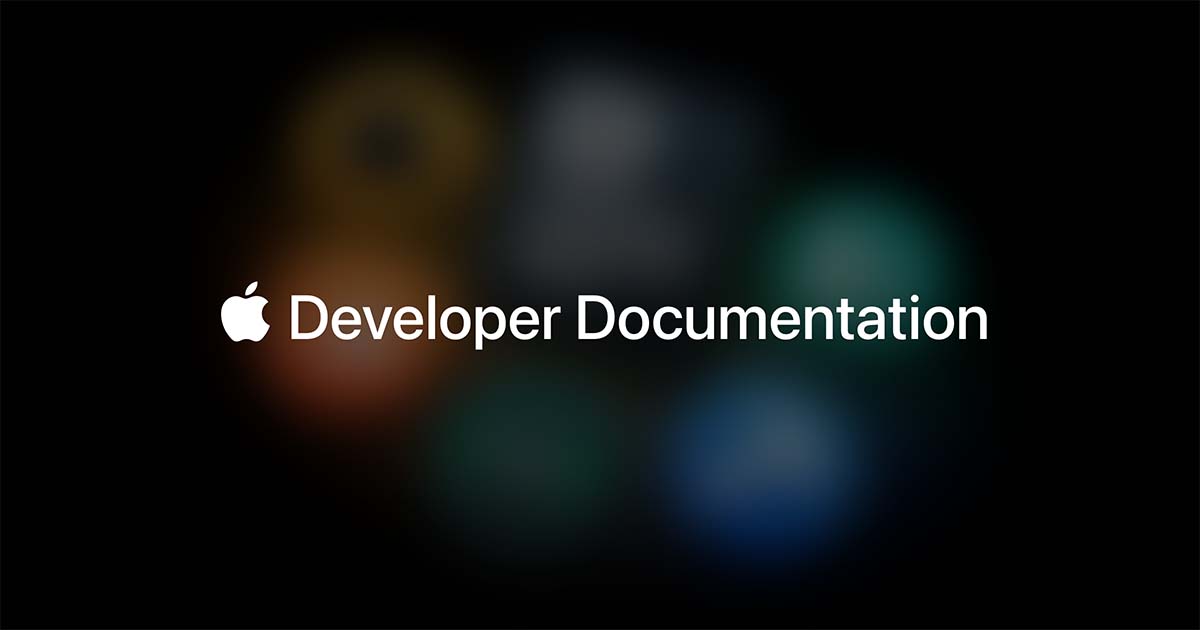A Developer's Guide to Understanding the NS Cocoa Error Domain
NS Cocoa Error Domain can be a confusing topic for developers. This comprehensive guide breaks down everything you need to know about it.

As a software engineer delving into Cocoa frameworks, the NS Cocoa Error Domain may have presented itself as an enigmatic and perplexing obstacle. Navigating this treacherous territory can be disconcerting, yet acquiring an in-depth comprehension of the underlying factors and viable resolutions can empower you to tackle and remediate dilemmas with remarkable proficiency. Allow us to illuminate the intricacies surrounding the NS Cocoa Error Domain in this comprehensive, insightful analysis tailored to the discerning developer.
What is NS Cocoa Error Domain?
The NSCocoaErrorDomain represents an intricately convoluted sphere of discrepancy within the Cocoa and Cocoa Touch frameworks, quintessential for developing macOS and iOS applications. When a confounding predicament arises in these frameworks, an NSError object materializes to encapsulate the perplexing nature of the error. This object conveys a cornucopia of information, encompassing its domain, an error code, and an enigmatic user info dictionary offering additional specifics.
errordomain=nscocoaerrordomain&errormessage=could not find the specified shortcut.&errorcode=4
errordomain=nscocoaerrordomain&errormessage=could not locate the designated shortcut.&errorcode=4
In the grander scheme, the NSCocoaErrorDomain constitutes an elaborate string constant that signifies an error domain explicitly associated with the Cocoa framework. These domains are indispensable classification tools that segregate errors according to their origin. The inception of an NSError object enveloped within the NSCocoaErrorDomain is a testament to the error's genesis from the Cocoa framework.
The errors within the NSCocoaErrorDomain span a diverse and intricate array of difficulties, ranging from labyrinthine file I/O complications to mystifying data validation snags and enigmatic Core Data-related conundrums. Each error brandishes a unique code that aids in navigating and resolving specific error scenarios in a sophisticated application.

Common error codes and their meanings
A plethora of distinct error codes can emanate from the NS Cocoa Error Domain, each signifying a particular implication. For example, some frequently encountered error codes comprise NSFileNoSuchFileError, denoting the nonexistence of a file or directory; NSFileReadNoSuchFileError, suggesting the inability to read a file or directory due to its absence; and NSFileWriteNoPermissionError, indicating a lack of user permission to write to a file or directory. Additional prevalent error codes include NSURLErrorNotConnectedToInternet, suggesting a lack of internet connectivity, and NSURLErrorTimedOut, implying a network request has exceeded its allotted time.
Deciphering error codes is crucial to diagnosing any complications that may surface while engaging with the NS Cocoa Error Domain. For instance, upon encountering an NSFileNoSuchFileError, one may need to verify the existence of the intended file or directory. Similarly, receiving an NSURLErrorNotConnectedToInternet error may necessitate confirming that the device is linked to a network. By comprehending the significance of these error codes, prompt identification and resolution of any emerging issues can be achieved.
How to handle NS Cocoa Error Domain in your code
Addressing NS Cocoa Error Domain occurrences in your software is vital for maintaining a seamless user experience and averting unforeseen application malfunctions. A highly effective method for managing these errors involves incorporating try-catch constructs within your code. This technique enables the interception of any thrown errors, facilitating suitable responses, which could entail presenting an error notification to the user or executing an alternative action. Additionally, it is imperative to log all emerging errors to expedite their detection and resolution.
A supplementary approach to managing NS Cocoa Error Domain errors involves employing error-handling functions furnished by Apple's frameworks, such as NSError. These functions facilitate a more systematic error-handling process with explicit error codes and descriptions. Thoroughly reviewing the documentation of the particular framework employed is crucial for comprehending the appropriate methodology for error management.
Decoding Error Message
The presented error message, which reads as
errordomain=nscocoaerrordomain&errormessage=could not locate the designated shortcut.&errorcode=4,
errordomain=nscocoaerrordomain&errormessage=could not find the specified shortcut.&errorcode=4
signifies an inability to locate the specified shortcut. This error message employs the NSCocoaErrorDomain error domain, a pre-established error domain within Apple's Cocoa framework, which is employed to signify errors associated with file I/O, memory allocation, and other Cocoa-specific issues. In this particular situation, the error appears to be connected to a shortcut that is unlocatable. Shortcuts represent a functionality within Apple's iOS and iPadOS operating systems, enabling users to automate various tasks and establish custom workflows. The designated shortcut may have been erased, relocated, or it could be that an error exists within the shortcut itself.
In order to rectify this error, consider implementing the following measures:
- Verify the existence of the specified shortcut. In the event that it is non-existent, generate a new shortcut or modify the existing one.
- Provided the shortcut exists, attempt to execute it manually to ascertain whether any errors are present.
- If errors are discovered within the shortcut, address these issues and reinitiate the shortcut.
- Should the error persist, contemplate rebooting the device or resetting the Shortcuts application.
If the aforementioned steps prove unsuccessful, it may be necessary to seek further assistance from Apple support or consult with a developer community.
Tips for troubleshooting and debugging NS Cocoa Error Domain
When examining and rectifying issues within the NS Cocoa Error Domain, it's imperative to initially pinpoint the precise error code being generated. This enables a swifter determination of potential error causes and hastens the discovery of viable solutions. To gain further insights into the error, including its code and description, the NSError object is a valuable resource. Moreover, the utilization of debugging instruments such as Xcode's debugger facilitates the process of tracing the code to identify the exact error location. Prior to launching your application for users, it's essential to conduct comprehensive testing to confirm the error's resolution.
In case the NS Cocoa Error Domain persists and remains unresolved, it's worthwhile to seek assistance from the developer community. Numerous online forums and networks enable developers to request guidance and share their encounters with analogous errors. Additionally, the Apple developer support team stands ready to provide aid in troubleshooting and resolving issues tied to the NS Cocoa Error Domain. By adhering to these recommendations and harnessing accessible resources, one can proficiently address and rectify the NS Cocoa Error Domain, ensuring a seamless user experience for your application.
Best practices for preventing NS Cocoa Error Domain in your code
To effectively circumvent the occurrence of NS Cocoa Error Domain within your programming endeavors, it is paramount that you adhere to good error management and debugging protocols. Such protocols encompass the implementation of try-catch constructs to address errors, verifying the absence of nil values before utilizing them, and employing informative error messages that facilitate the expeditious identification and rectification of the error source. Moreover, it is crucial to rigorously examine your code in advance of its dissemination to end-users, ensuring that all possible errors have been intercepted and rectified. Diligent adherence to these premier practices will significantly reduce the likelihood of NS Cocoa Error Domain and other error manifestations within your code.
A critical measure to avoid the NS Cocoa Error Domain is the incorporation of try-catch constructs for error management. This technique enables you to intercept errors that transpire during runtime and address them accordingly, forestalling application crashes. Furthermore, it is essential to authenticate the nonexistence of nil values before employing them in your code, as this can also result in error manifestations. Finally, utilizing elucidative error messages is equally beneficial for pinpointing the error origin and expediting its resolution. In conclusion, the exhaustive examination of your code before its release is indispensable to identify potential errors and guarantee seamless application operation for end-users. Adhering to these industry-standard practices can substantially mitigate the risk of NS Cocoa Error Domain and other error occurrences within your code.

Conclusion
Cocoa Error Domain is a framework used by Apple’s macOS and iOS operating systems to report errors that occur in the Cocoa application environment. Cocoa is a development framework for creating applications that run on macOS and iOS. It provides developers with classes, libraries, and tools to create powerful, intuitive user interfaces and other features. However, like any other software framework, it can encounter errors or issues that must be resolved.
An error in Cocoa generates an error code or message associated with a specific error domain. The error domain provides information about the origin and type of the error that occurred. The Cocoa Error Domain is a predefined error domain that Cocoa uses to report errors related to file input and output, networking, and other common application functions.
The NS Cocoa Error Domain constant in Objective-C and Swift programming languages represents the Cocoa Error Domain. When an error occurs in Cocoa, the message typically includes the domain name, the error code, and a description. For example, a common error in Cocoa is “The operation couldn’t be completed. (Cocoa error 3840.)”.
To help developers identify and resolve application errors, Apple provides a comprehensive list of error codes and descriptions for the Cocoa Error Domain. These error codes are organized into categories based on the type of error, such as file system, networking, and property list errors.
Some common causes of Cocoa Error Domain errors include invalid input data, missing files or resources, network connectivity issues, and permissions or access issues. To resolve these errors, developers must identify the root cause and take appropriate steps to fix it.
For example, suppose a file cannot be opened due to a Cocoa Error Domain error. In that case, the developer may need to check that the file exists in the correct location, that the user has appropriate permissions to access the file, and that another process does not currently use the file. Similarly, if a networking error occurs, the developer may need to check the network connection, ensure that the correct network protocols are being used, and verify that any required authentication or authorization is in place.
In conclusion, the Cocoa Error Domain is an integral part of the Cocoa development framework, providing developers with a mechanism for reporting and resolving application errors. By understanding the causes and solutions to common Cocoa Error Domain errors, developers can create more reliable and robust applications for macOS and iOS.


